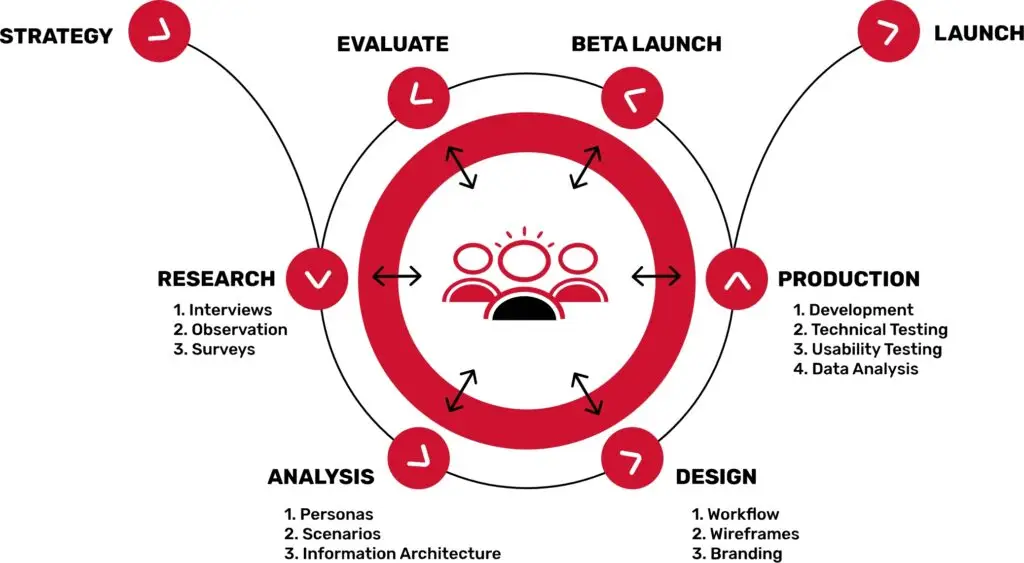Artificial Intelligence ways to improve UX design with AI is no longer a futuristic concept; it’s actively shaping how we design, interact with, and experience digital products. In UX design, AI is ushering in an era of smarter interfaces, faster workflows, and deeply personalized user journeys. From predictive analytics to intelligent automation, its influence is redefining design norms and expectations. In this article, we’ll explore the ways to improve UX design with AI transforming UX and what this means for designers and users alike.
The Role of AI in Understanding User Behavior

The ways to improve UX design with AI enables designers to collect and analyze large volumes of user data with speed and precision. Through machine learning algorithms, AI tools identify behavioral patterns, pinpoint friction points, and highlight user preferences that would be hard to notice manually. This deep understanding helps designers refine interfaces to match real user expectations and improve satisfaction.
Read also AI intelligence stocks
5 ways to improve UX design with AI
AI doesn’t just inform design, it actively changes how work is done.
And here are five ways to improve UX design with AI or ways it’s transforming 1.UX workflows:
Faster Prototyping: AI can auto-generate wireframes based on user input or brand guidelines.
2.Smarter Testing: AI tools simulate user interactions and provide feedback faster than human testing cycles.
Content Optimization: AI adjusts copy, layout, and visuals dynamically based on user preferences.
3.Efficient Research: Natural language processing allows AI to sift through survey data and reviews instantly.
Design Recommendations: Based on user data, AI suggests layout improvements and interface tweaks.
4.Predictive Design: Creating Experiences Before Users Ask
Predictive design is the art of anticipating what a user needs before they make 5.a request. AI uses historical data and behavioral patterns to suggest next steps, autofill inputs, or recommend features proactively. This not only enhances usability but also builds a more fluid, intuitive digital journey for users.
Read alsoai-dashboard-finance,mobile app designs template
Why Personalization Matters More Than Ever
Modern users expect digital experiences tailored to them. ways to improve UX design with AI delivers on this expectation by dynamically adapting interfaces, content, and even tone based on individual user profiles. For example, e-commerce platforms use AI to display personalized product recommendations, while streaming services curate custom playlists, all based on learned user behavior.https://en.wikipedia.org/wiki/User_experience_design
The Power of AI in Accessibility Design
Inclusivity in design is a growing priority, and AI is making accessibility more achievable. AI-driven tools like voice recognition, auto-captioning, and screen readers can adapt interfaces to meet the needs of users with disabilities. Moreover, AI can detect when certain design elements are causing challenges and suggest alternatives to improve usability for all.
Real-Time Feedback and Continuous Optimization
One of AI’s greatest strengths is its ability to work in real time. UX designers can use AI tools to monitor how users interact with a product as they use it, generating live feedback that leads to immediate improvements. This continuous cycle of optimization helps maintain a high-quality user experience over time.
Ethical UX Design in the Age of AI
As ways to improve UX design with AI become more embedded in design, ethical considerations must be addressed. Designers need to ensure transparency in data collection and avoid manipulative patterns driven by algorithms. Additionally, AI should be used to empower users, not to deceive or control them. Responsible use of AI includes privacy protection and bias-free recommendations.
4 Challenges Designers Face with AI Integration
Despite its benefits, integrating AI into UX design presents several challenges:
Data Dependency: AI needs quality data, and poor inputs lead to poor design decisions.
Loss of Human Touch: Automated systems may overlook emotional nuance.
Over-Complexity: Designers risk making interfaces too reliant on AI features.
Bias in AI Models: If training data lacks diversity, design solutions may exclude some user groups.
Bridging the Gap Between Designers and Data Scientists
Successful AI-powered UX design requires collaboration between UX professionals and data scientists. Designers bring empathy and creativity, while data scientists contribute analytical power. Together, they ensure AI tools are both technically sound and user-centered.
Automating Routine Design Tasks with AI
ways to improve UX design with AI can take over repetitive tasks such as resizing elements, applying consistent typography, or aligning layouts.
This frees up designers to focus on strategic creativity and user experience enhancements rather than spending time on minor adjustments.
How to Get Started with AI Tools for UX
Designers can start small by incorporating AI-driven platforms into their workflow. Tools like Adobe Sensei, Uizard, and Figma plugins with AI capabilities can streamline prototyping and testing. Gradually integrating these tools allows teams to evolve without disrupting current practices.
The Future of UX Design in an AI-Driven World
Looking ahead, ways to improve UX design with AI will become more collaborative between humans and machines. Designers will increasingly take on roles as curators and strategists, guiding AI systems to align with human values. As AI tools evolve, the focus will shift from “how we design” to “how we make users feel.”
Can AI help with UI design?
Yes, AI can assist with UI design by generating layouts, suggesting improvements, and automating repetitive design tasks. It helps create faster, more consistent, and user-centered interfaces.
What is the best AI for UI design?
Tools like Uizard, Figma with AI plugins, and Adobe Firefly are popular for UI design, offering intelligent suggestions and design automation. The best tool depends on your workflow and design goals.
How AI can be used in design?
AI aids in wireframing, layout generation, usability testing, and user behavior analysis. It also personalizes user experiences and speeds up the design process.
Can ChatGPT generate UI designs?
ChatGPT can generate UI design ideas, layout descriptions, and even code components. While it doesn’t create visual mockups, it can guide the design process effectively.

No comment